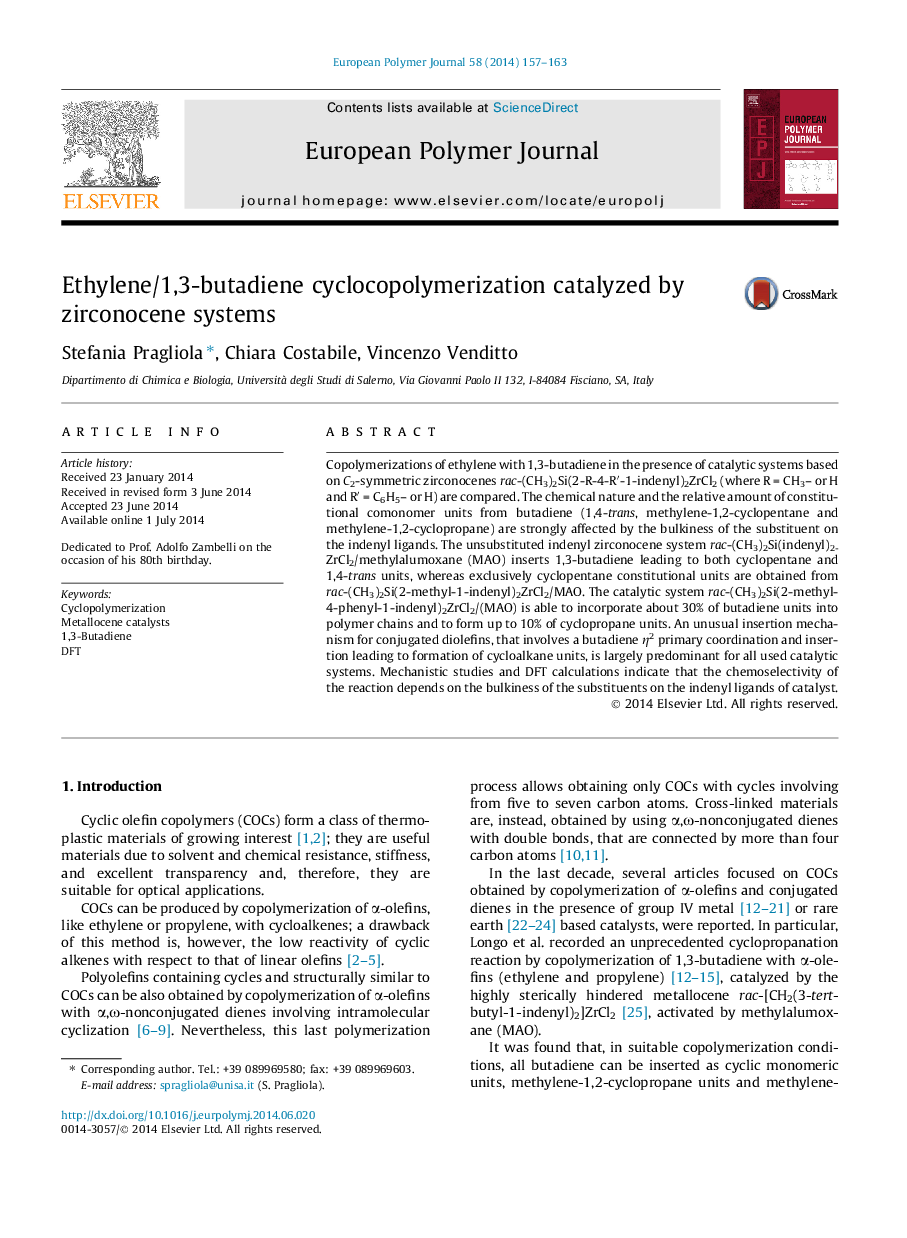| Article ID | Journal | Published Year | Pages | File Type |
|---|---|---|---|---|
| 1399352 | European Polymer Journal | 2014 | 7 Pages |
•Zirconocene based catalysts were used for ethylene–butadiene copolymerization.•Ethylene copolymers containing up to 30% of cyclic units were obtained.•Mechanistic studies and DFT calculations of polymerization process are reported.•Copolymer microstructures depend on the bulkiness of the catalyst substituents.
Copolymerizations of ethylene with 1,3-butadiene in the presence of catalytic systems based on C2-symmetric zirconocenes rac-(CH3)2Si(2-R-4-R′-1-indenyl)2ZrCl2 (where R = CH3– or H and R′ = C6H5– or H) are compared. The chemical nature and the relative amount of constitutional comonomer units from butadiene (1,4-trans, methylene-1,2-cyclopentane and methylene-1,2-cyclopropane) are strongly affected by the bulkiness of the substituent on the indenyl ligands. The unsubstituted indenyl zirconocene system rac-(CH3)2Si(indenyl)2ZrCl2/methylalumoxane (MAO) inserts 1,3-butadiene leading to both cyclopentane and 1,4-trans units, whereas exclusively cyclopentane constitutional units are obtained from rac-(CH3)2Si(2-methyl-1-indenyl)2ZrCl2/MAO. The catalytic system rac-(CH3)2Si(2-methyl-4-phenyl-1-indenyl)2ZrCl2/(MAO) is able to incorporate about 30% of butadiene units into polymer chains and to form up to 10% of cyclopropane units. An unusual insertion mechanism for conjugated diolefins, that involves a butadiene η2 primary coordination and insertion leading to formation of cycloalkane units, is largely predominant for all used catalytic systems. Mechanistic studies and DFT calculations indicate that the chemoselectivity of the reaction depends on the bulkiness of the substituents on the indenyl ligands of catalyst.
Graphical abstractFigure optionsDownload full-size imageDownload as PowerPoint slide
